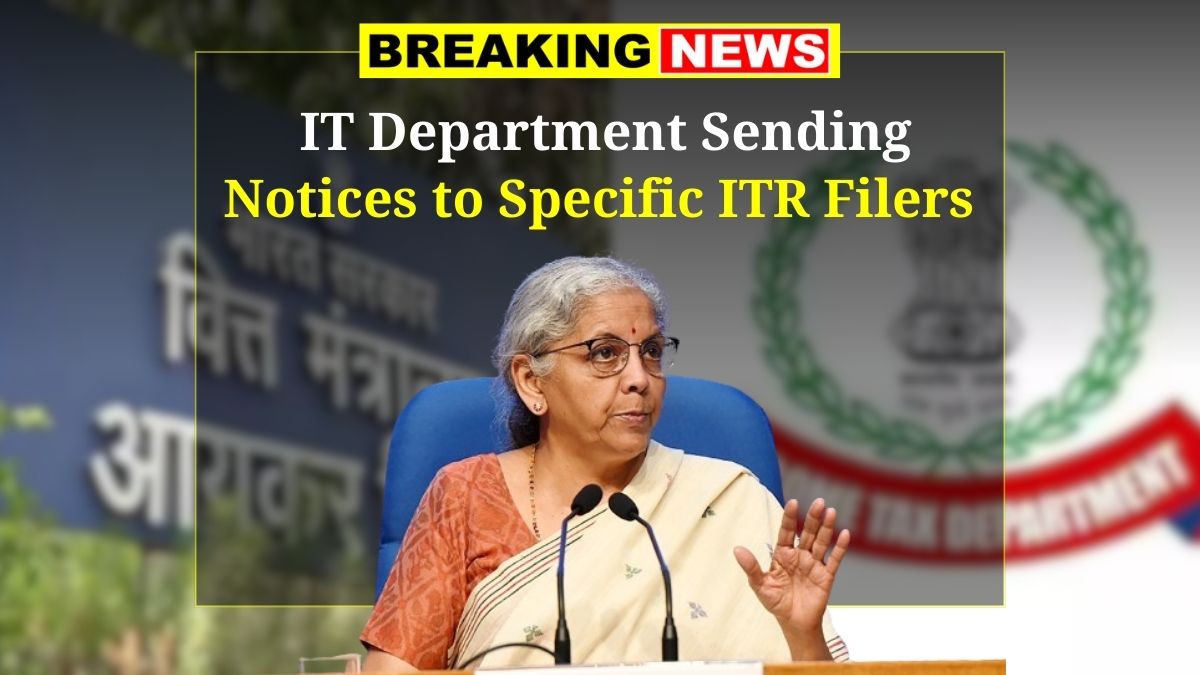Income Tax Notice – The Income Tax (IT) Department has ramped up its efforts to ensure compliance, especially when it comes to salaried individuals. If you’ve recently filed your Income Tax Return (ITR), you might be one of the many receiving a notice if there are discrepancies in your filing. The IT Department is focusing on cases where errors, mismatches, or inconsistencies are found, making it important to stay on top of your filing and fix any issues before they become bigger problems.
Who’s Likely to Get an IT Notice?
The IT Department is paying extra attention to certain groups of people based on their ITR filings. If you fall into one of these categories, there’s a higher chance of getting a notice:
- Salary mismatches: If your salary doesn’t match what’s shown in your ITR.
- Excessive deductions: If you’ve claimed more deductions than you should, or if they aren’t backed by proper receipts.
- Form 16 and ITR mismatch: If the details on your Form 16 and ITR don’t align.
- High-value transactions: If you’ve made big purchases or deposits but haven’t declared them.
- Large cash deposits post-demonetization: If you’ve deposited large amounts of cash since demonetization without explaining the source.
- Undisclosed income: If you’ve got extra income, like freelance work or investment returns, that you didn’t mention.
Failure to respond to previous notices: If you’ve ignored previous IT notices.
Why You Might Get an IT Notice
Sometimes even salaried individuals who think they’ve filed correctly can end up getting a notice. Here are the most common reasons this could happen:
- Mismatch between Form 16 and Form 26AS: Your employer’s TDS certificate (Form 16) doesn’t match the data available with the tax department (Form 26AS).
- Undisclosed income: This could include income from investments, side jobs, or rental income that you didn’t mention.
- Excessive deductions: If you’ve claimed deductions like HRA, LTA, or deductions under Section 80C but don’t have the proper proof.
- High-value transactions: If you’ve made big purchases, like property or expensive items, or deposited a large sum of money but didn’t report them.
- Filing the wrong ITR form: If you’ve used the wrong form for your type of income, this can trigger a notice.
- Errors in TDS or income reporting: If there’s a mismatch between the TDS (Tax Deducted at Source) claimed in your ITR and the actual deductions.
- Non-filing of returns: If you’re eligible to file taxes but haven’t done so.
- Not responding to notices: If you’ve received a notice previously and didn’t take action, it could trigger another.
Types of IT Notices You Could Receive
The type of notice you receive depends on what the IT Department is questioning. Here are the most common types of notices:
- Notice under Section 139(9): This is a notice saying your return is defective and needs to be fixed.
- Notice under Section 143(1): This is a simple notice about minor mismatches or adjustments in your filing.
- Notice under Section 142(1): You’ll get this notice if the IT Department needs more details or documents from you.
- Notice under Section 148: This is for reassessment if the IT Department thinks some of your income hasn’t been taxed.
- Notice under Section 245: If you have any outstanding dues, this notice can be sent to adjust your refund against those.
How to Handle an IT Notice
Getting an IT notice can be nerve-wracking, but don’t panic. Here’s how you can take care of it:
- Read the notice carefully: Understand what the notice is about before doing anything.
- Double-check your ITR: Go through your filed ITR and compare it with Form 16, Form 26AS, and your Annual Information Statement (AIS).
- Fix any mistakes: If you find errors, you’ll likely need to file a revised return.
- Submit your response: You can respond to the notice through the IT Department’s e-filing portal.
- Seek professional help: If you’re unsure about the notice or how to respond, it’s a good idea to consult a tax professional, like a Chartered Accountant (CA).
- Keep your documents ready: Gather all your supporting documents, like bank statements, receipts, and any other relevant papers.
Precautions for Future ITR Filings
To avoid future notices, here are some best practices you can follow when filing your taxes:
- Verify your details: Before submitting your ITR, double-check Form 16, Form 26AS, and AIS to ensure everything matches.
- Declare all income: Make sure to report any extra income, including interest, rental income, or freelance earnings.
- Have proof for your deductions: When claiming deductions like HRA or Section 80C, ensure you have the necessary receipts and documentation.
- File the right ITR form: Make sure you’re using the correct form based on your type of income.
- File on time: Avoid late fees and additional scrutiny by filing before the deadline.
- Don’t exaggerate refunds: If you’re eligible for a refund, make sure it’s reasonable based on your actual income and tax paid.
- Stay responsive: If you receive a notice, make sure you respond on time and keep communication open with the IT Department.
While receiving an IT notice can be stressful, it’s not the end of the world. If you handle it carefully, there’s a good chance you can resolve the issue without penalties. The key is to be accurate, transparent, and timely in your tax filings. If you’re unsure about any part of your return, getting professional advice can save you a lot of trouble. Stay on top of your taxes, and you’ll avoid unnecessary hassles in the future.



